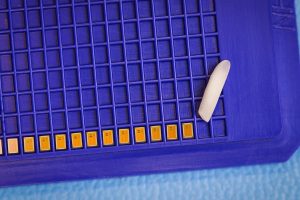 Everything needs to be online nowadays, from vending machines to smart speakers, but that connectivity costs in terms of bulk and energy use. Now researchers have come up with a chip that gets devices connected with 5,000 times less power draw than normal.
Everything needs to be online nowadays, from vending machines to smart speakers, but that connectivity costs in terms of bulk and energy use. Now researchers have come up with a chip that gets devices connected with 5,000 times less power draw than normal.
For manufacturers developing small, low-powered Internet of Things devices, that’s a significant step forward. It means that hardware can be made smaller, and use less energy, while still pinging the web for updates and information.
The chip itself is smaller than a grain of rice and consumes just 28 microwatts of power, a tiny fraction of a standard Wi-Fi radio. It can transmit data at a rate of 2 megabits a second (enough for decent quality video) at a range of up to 21 meters (69 ft).
This feat of engineering is achieved through a technique called backscattering, which encodes new data on to incoming Wi-Fi signals before transmitting them on somewhere else. This sort of piggybacking uses up far less energy, and that means a lot more flexibility for device makers.
